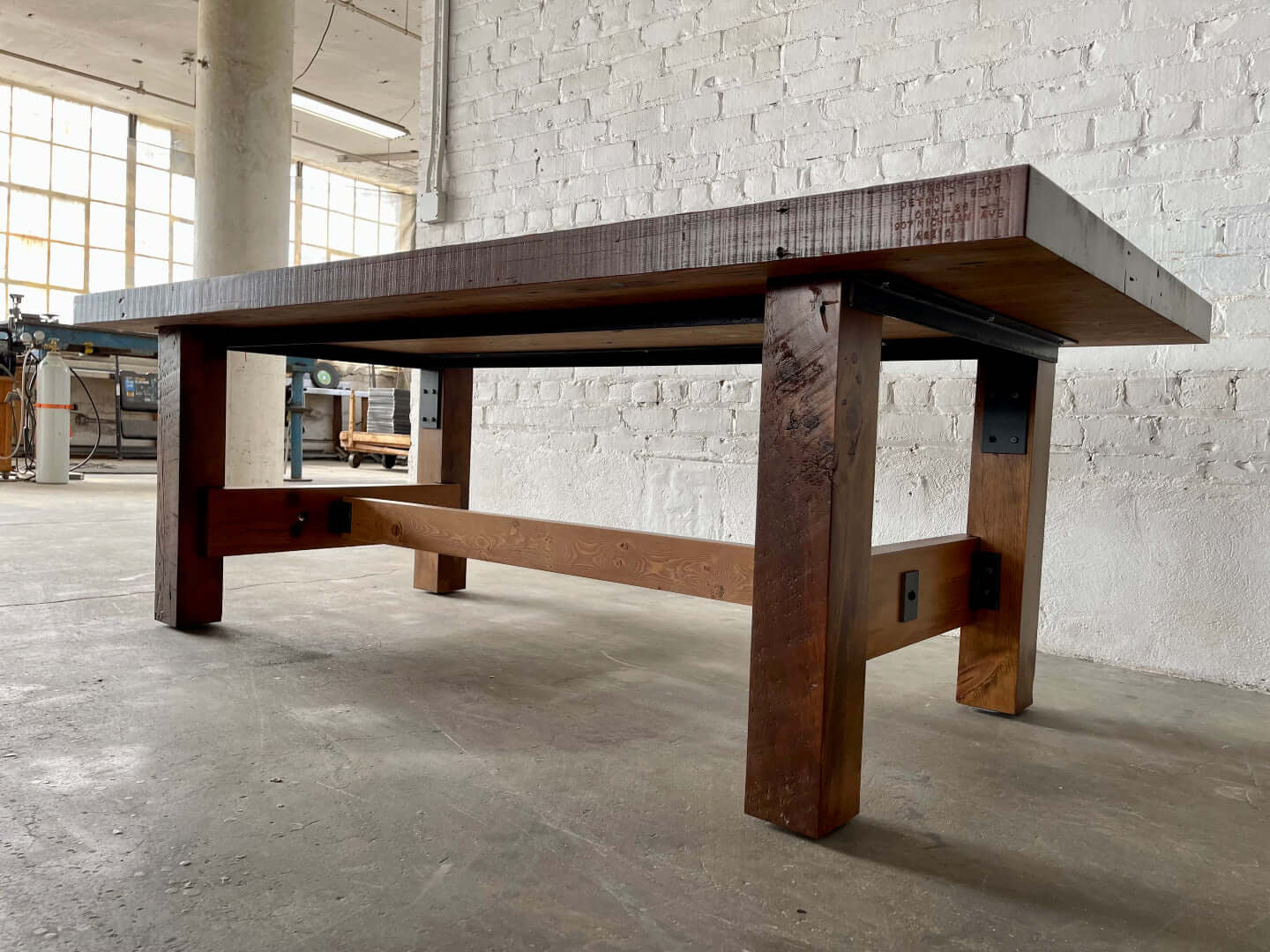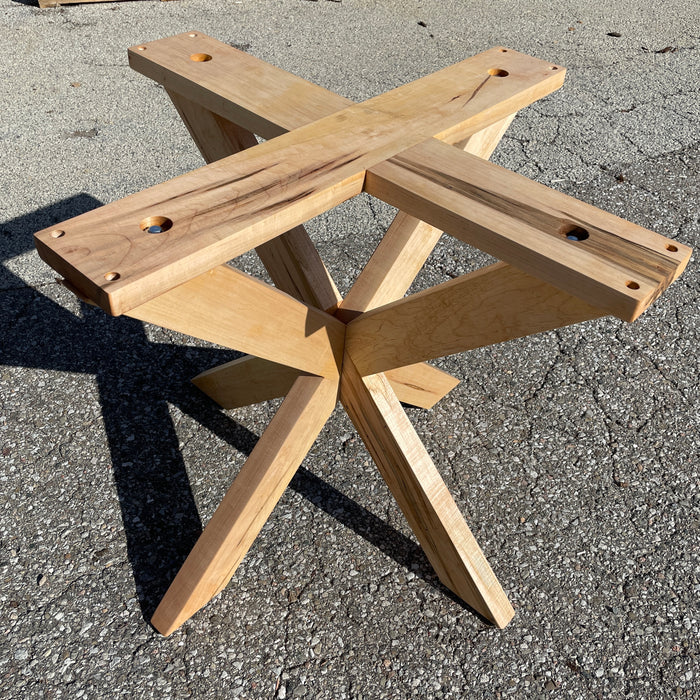Discover Classic Beauty in Handcrafted Dining Table Legs Wood Selections
What to Think About When Selecting Table Legs Timber for Your Home.
When selecting wood for eating table legs, several crucial aspects warrant careful factor to consider to guarantee both performance and aesthetic appeal. The kind of wood selected can significantly affect the table's durability, stability, and total design, while the upkeep demands might affect long-term usability.

Importance of Timber Type
When choosing dining table legs, the option of timber type plays a critical role in figuring out both aesthetics and longevity. Different timber varieties supply differing levels of weight, stamina, and resistance to put on, which can dramatically impact the functionality and durability of the table.
Alternatively, softer woods like poplar or want, while much more economical, might not use the exact same degree of longevity and might need even more constant maintenance or replacement. The timber kind likewise influences the table's capacity to sustain environmental aspects such as humidity and temperature variations. Additionally, the selection of timber can affect the simplicity of ending up and staining, which can be essential for attaining the wanted look.
Visual Factors To Consider
The aesthetic allure of eating table legs significantly adds to the overall visual of the dining area. Dining Table Legs Wood. When picking wood for eating table legs, the grain pattern, finish, and color are crucial elements that can detract or boost from the area's design. Different timber kinds show varying textures and shades; as an example, oak offers a timeless look with famous grain, while walnut offers a rich, dark beauty
In addition, the form of the legs plays an important duty in specifying the table's personality. Sleek, minimal legs can develop a modern feeling, while extra elaborate, transformed legs evoke typical appeal. The design of the legs need to integrate with existing furnishings and the overall theme of the space, whether it be rustic, modern-day, or transitional.
It is likewise necessary to consider just how the legs engage with other furniture items, including chairs and sideboards. A cohesive style not just raises the eating experience yet likewise adds to the home's general aesthetic comprehensibility. Ultimately, the selection of dining table legs must be a thoughtful decision that reflects individual taste while guaranteeing visual consistency within the room.

Durability and Security
Resilience and security are vital variables in the choice of dining table legs, as they directly influence the longevity and safety and security of the furnishings. When choosing timber for eating table legs, one must consider the intrinsic residential or commercial properties of various timber types. Woods, such as cherry, maple, and oak, are frequently preferred for their toughness and resistance to wear, making them appropriate for high-traffic dining locations.
Along with the kind of wood, the construction method also plays a significant duty in the overall security of the table. Legs that are sturdily created, either through conventional joinery strategies or modern design methods, will supply improved support and stop tottering. It is vital to examine the thickness and style of the legs; thicker legs are typically much more stable and can stand up to better weight.
Additionally, the ecological conditions in which the table will be made use of can influence durability. Wood that has been appropriately dealt with for wetness resistance will certainly perform better in damp atmospheres. Inevitably, picking the ideal combination of long lasting wood and steady building and construction will make sure that your eating table stays a practical and secure focal point in your house for several years to come.
Maintenance Demands
Selecting dining table legs made from resilient timber is just the start; understanding maintenance needs is equally vital to preserve their appearance and capability. Various wood types require differing degrees of care, so it is important to know what is needed for your specific selection.
Regular cleansing is essential; utilize a soft, damp cloth to remove dust and particles. Prevent extreme chemicals that can harm the coating. For wood finishes like varnish or lacquer, regular polishing with furniture wax can improve sparkle and provide a safety layer versus scratches.
Preventative steps are important as well. Usage coasters and placemats to stay clear of direct contact with hot or wet things, which can warp or discolor the timber. Furthermore, take into consideration placing really felt pads under the legs to avoid scrapes on your floor covering and lower This Site endure the wood
Humidity control is one more significant aspect; preserving a secure environment aids to protect against warping and splitting. If your dining location is vulnerable to changes in temperature and wetness, consider making use of a humidifier or dehumidifier as essential.
Spending Plan and Price Factors
When preparing to buy table legs, recognizing spending plan and cost aspects is necessary to make an informed decision. The type of wood selected for the legs considerably affects the overall price. Hardwoods, such as oak or walnut, tend to be a lot more costly than softwoods like yearn, because of their toughness, visual appeal, and scarcity. Furthermore, think about whether you are purchasing pre-made legs or opting for custom layouts, as modification usually incurs higher expenses.
Labor and workmanship likewise play a pivotal role in the general expense. Handmade or artisan-crafted legs may lug a premium price, reflecting the ability and time purchased their creation. It's critical to analyze the balance in between quality and expense; spending extra in advance can cause a longer-lasting product that calls for much less maintenance in time.
Verdict
In recap, picking the appropriate wood for dining table legs requires careful consideration of different elements, including timber type, visual appeal, upkeep, spending plan, and resilience restraints. The selection of woods such as oak and maple can improve both stamina and visual appeal, while softer woods may be more cost-effective but less enduring. Inevitably, a well-informed decision regarding material choice will add to the general capability and durability of the table, making certain an important investment for the home.
When selecting timber for this article dining table legs, several critical aspects require cautious consideration to ensure both functionality and aesthetic appeal.When selecting eating table legs, the option of timber type plays a crucial function in identifying both aesthetic appeals and longevity. When picking timber for eating table legs, the grain coating, color, and pattern are crucial elements that can check my site enhance or take away from the area's style. When selecting wood for dining table legs, one should take into consideration the integral properties of various timber types.In recap, selecting the suitable timber for eating table legs demands cautious consideration of numerous variables, including wood type, visual appeal, toughness, spending plan, and upkeep restrictions.